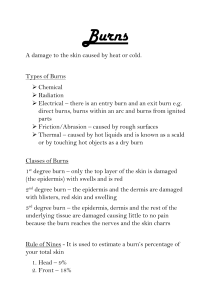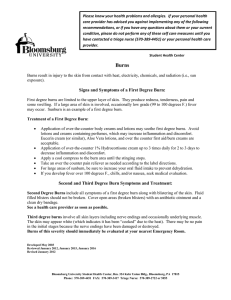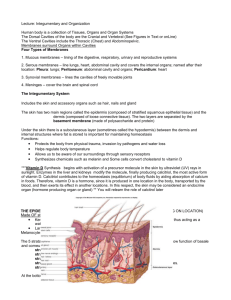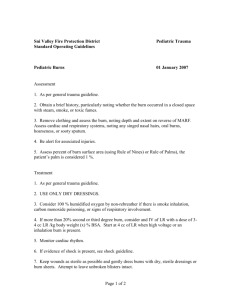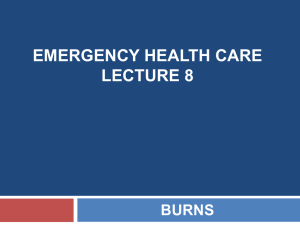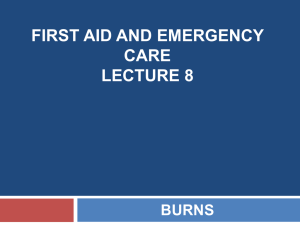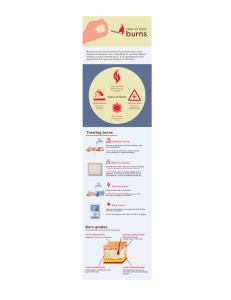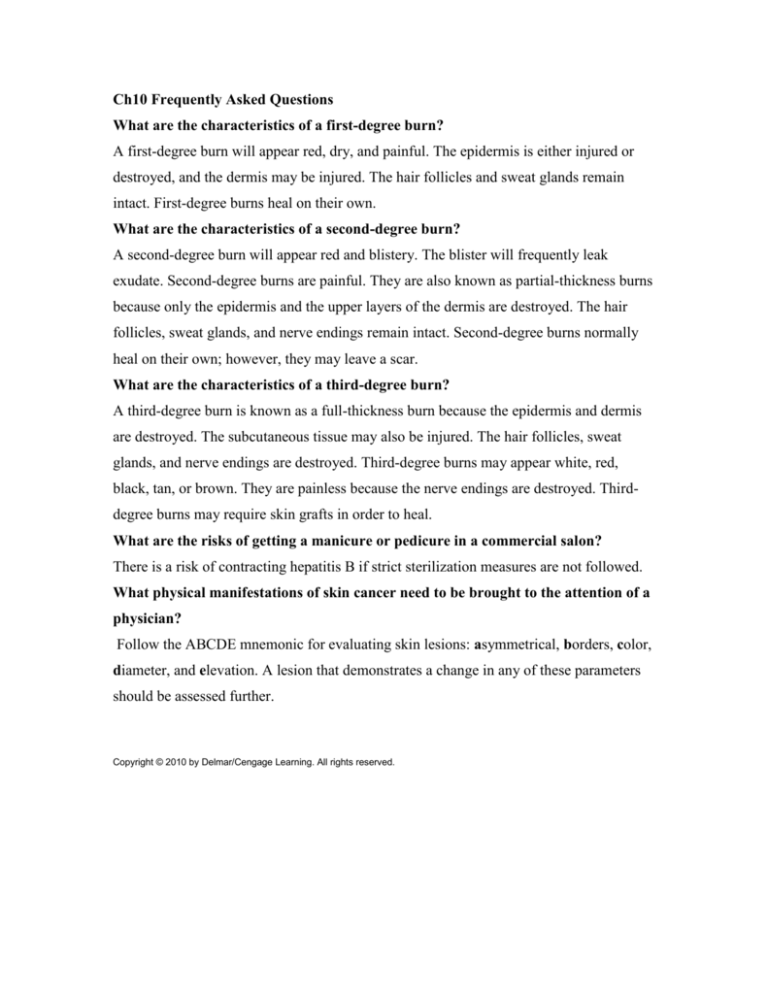
Ch10 Frequently Asked Questions
What are the characteristics of a first-degree burn?
A first-degree burn will appear red, dry, and painful. The epidermis is either injured or
destroyed, and the dermis may be injured. The hair follicles and sweat glands remain
intact. First-degree burns heal on their own.
What are the characteristics of a second-degree burn?
A second-degree burn will appear red and blistery. The blister will frequently leak
exudate. Second-degree burns are painful. They are also known as partial-thickness burns
because only the epidermis and the upper layers of the dermis are destroyed. The hair
follicles, sweat glands, and nerve endings remain intact. Second-degree burns normally
heal on their own; however, they may leave a scar.
What are the characteristics of a third-degree burn?
A third-degree burn is known as a full-thickness burn because the epidermis and dermis
are destroyed. The subcutaneous tissue may also be injured. The hair follicles, sweat
glands, and nerve endings are destroyed. Third-degree burns may appear white, red,
black, tan, or brown. They are painless because the nerve endings are destroyed. Thirddegree burns may require skin grafts in order to heal.
What are the risks of getting a manicure or pedicure in a commercial salon?
There is a risk of contracting hepatitis B if strict sterilization measures are not followed.
What physical manifestations of skin cancer need to be brought to the attention of a
physician?
Follow the ABCDE mnemonic for evaluating skin lesions: asymmetrical, borders, color,
diameter, and elevation. A lesion that demonstrates a change in any of these parameters
should be assessed further.
Copyright © 2010 by Delmar/Cengage Learning. All rights reserved.


